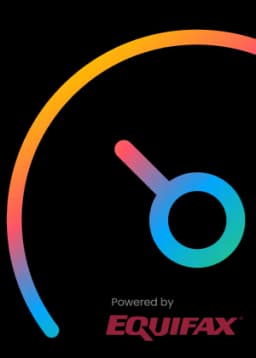2023 is almost coming to an end and many Canadians are getting ready for their New Year's resolutions, which often involves budgeting and saving money. It may seem a bit early to start thinking about that, but it never is! In fact, it’s in your best interest to get a head start.
Financial planning and budgeting at year-end isn’t just about closing the current year on a high note; it’s also about setting the foundation for financial success in 2024. Whether it's maximizing contributions to an RRSP, taking advantage of a TFSA, or simply revising your budget, each action you take, no matter how seemingly small they are, can make a big impact on your financial well-being.
This blog aims to provide you with tips and insights specific to the Canadian financial landscape. From tax-saving strategies to investment advice, we'll cover specific areas to help you navigate your financial planning as a Canadian. Whether you're an experienced investor or just starting to map out your financial journey, these end-of-year strategies will help you step into the new year with confidence and a solid financial plan.
Assessing and Managing Debt
Managing debt can be overwhelming for many Canadians, especially as the year draws to a close. In fact, according to the Consumer Debt Report of 2023, 33% of Canadians feel anxious about their current financial situation. However, taking control of your debt is an important step towards financial stability, and easier to achieve than you might think. Here's how you can assess and manage your debt effectively, even in challenging financial situations.
Understand Your Debt: The first step in managing debt is to have a clear understanding of exactly what you owe. You should make a list of all your debts, including credit card balances, loans, and mortgages. Keep a record of interest rates, monthly minimum payments, and due dates. This is going to help you prioritize which debts to pay off first with this comprehensive view.
Use The Snowball vs. Avalanche Method: There are two popular methods for paying off debt: the snowball method and the avalanche method. The snowball method involves paying off your smallest debts first and then gradually working up to the larger ones. A lot of people like this method because it can create a sense of accomplishment and motivate you to continue. On the other hand, the avalanche method focuses on paying off debts with the highest interest rates first, which can save you money over time.
Negotiate with Creditors: If you're struggling to make payments, it's worth contacting your creditors and asking for more manageable repayment terms. If you communicate proactively and honestly about your financial challenges, many creditors in Canada will be willing to work with you to adjust your payment plans.
Consider Debt Consolidation: Debt consolidation involves taking out a new loan to pay off a variety of debts, leaving you with a single, more manageable monthly payment. While this method can be helpful, it's extremely important to make sure the terms of your consolidation loan are favorable and don’t plunge you into more debt than you may already be dealing with.
Seeking Professional Advice: If you’re feeling overwhelmed, it’s never a bad thing to seek out help from a professional. You can develop a personalized debt management plan with the help of certified credit counselors in Canada. They can also explain debt relief options like consumer proposals or bankruptcy (only if necessary, of course)
Remember, managing debt is a journey that begins with small steps, but that leads to significant changes. The end of the year is a perfect time to start taking control of your financial situation, setting the stage for a more stable and secure financial future.
Tips for Creating a Realistic Budget
For Canadians grappling with financial challenges, a budget not only helps in managing your current financial situation but also in planning for the future, even when funds are tight. Here are a few tips on how you can create and maintain a budget that works for you, despite financial strains.
Assess Your Financial Situation: Begin by getting a clear picture of your income and expenses. Make a list of all sources of income, including wages, benefits, and any other earnings. Next, categorize your expenses for a month into essentials (such as rent, utilities, and groceries) and non-essentials (such as dining out and entertainment). This is going to help you identify where your money is going and where you might be able to cut back.
Set Realistic Goals: Based on your assessment, start setting achievable financial goals. This might include reducing debt, saving a bit of cash for an emergency fund, or simply ensuring that expenses don't exceed income. Your goals should be Specific, Measurable, Achievable, Relevant, and Time-bound (SMART).
Prioritize Essential Expenses: Prioritize spending on essentials like housing, utilities, groceries, and debt payments. Look for areas where you can reduce costs, such as using energy more efficiently to lower utility bills or buying groceries in bulk.
Cut Back on Non-Essential Spending: For non-essential expenses, determine what you can reduce or eliminate. Simple changes, like cooking at home instead of eating out or canceling any subscription services you don’t use too often, can make a significant difference. Even small savings can add up over time.
Use Budgeting Tools: Consider using budgeting tools and apps. Many are available for free and can help you track your spending and stay on top of your budget. These tools can be particularly helpful in providing a visual representation of where your money is going.
Adjust Your Budget as Needed: Life changes, and so should your budget if needed. Regularly review and adjust your budget, especially if there’s a change in your income or expenses. This will help you stay on track and meet your financial goals.
Creating a realistic budget may seem hard, especially when funds are limited, but it’s an important step toward regaining control of your finances and is possible for everyone to accomplish. With dedication and careful planning, you can create a budget that steers you toward a more secure financial future.
Saving Strategies for Tight Budgets
The first key to saving on a tight budget is starting small. Even if it’s just a few dollars a week, your savings can slowly add up over time. Consider setting up an automatic transfer to a savings account (with a decent interest rate if possible) each payday, even if it’s just a small amount. This 'set and forget' approach ensures you’re consistently saving without having to think about it each time.
There’s no such thing as revising your budget too often. Your expenses may change from month to month, so it’s important to see if there are areas you can improve upon. You may even discover that you have a little more in the budget in one particular month, and you can choose to either save it or spend it in a way you deem fit.
Try to make a savings account for emergencies, even if you only add a little bit of money at a time. This special account helps you handle surprise costs without getting into more debt. Start by saving a small amount, like $200 to $500 if possible, and then save more when you can.
It's hard to save money when you don't have a lot, but keep trying and think positively. Be happy about small steps and keep your big goals in mind. Remember, even saving a little bit is a good start to being better with money.
Adding these ideas to your money plans can make it easier to have extra money for later, even if it seems like you're using every penny now. Begin with a small amount and keep going. This way, you can grow your savings slowly and make your money situation better.
Navigating Financial Challenges with Support from iCash
As we finish this guide about managing money and making a budget when money is tight, it's good to know that getting better with money usually happens in small, steady steps. This could mean looking again at your debts, making a budget that works for you, finding ways to save even when it's hard, or looking for extra ways to make money. Every step you take is moving in the right direction.
We get that sometimes, even when you try your best, surprise costs come up and you need money right away. In these tough money times, iCash has a quick solution with instant payday loans. iCash is a place Canadians trust for fast money help without the long wait that usual loans have. These loans can be good for a short time to help with money gaps.
Remember, getting better with money isn't always easy, and asking for help is a strong thing to do, not weak. Stay hopeful, know what's going on, and use the help that's out there. With the right steps and support, you can get through money problems and come out stronger.
If you need money fast, check out what iCash offers. They are ready to help Canadians in hard times with their quick and simple payday loan services.












